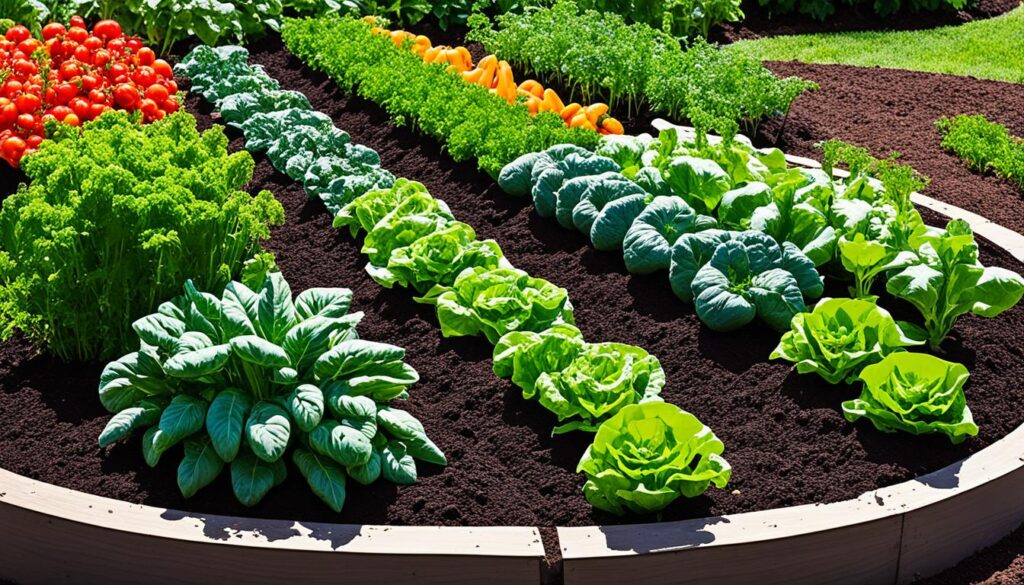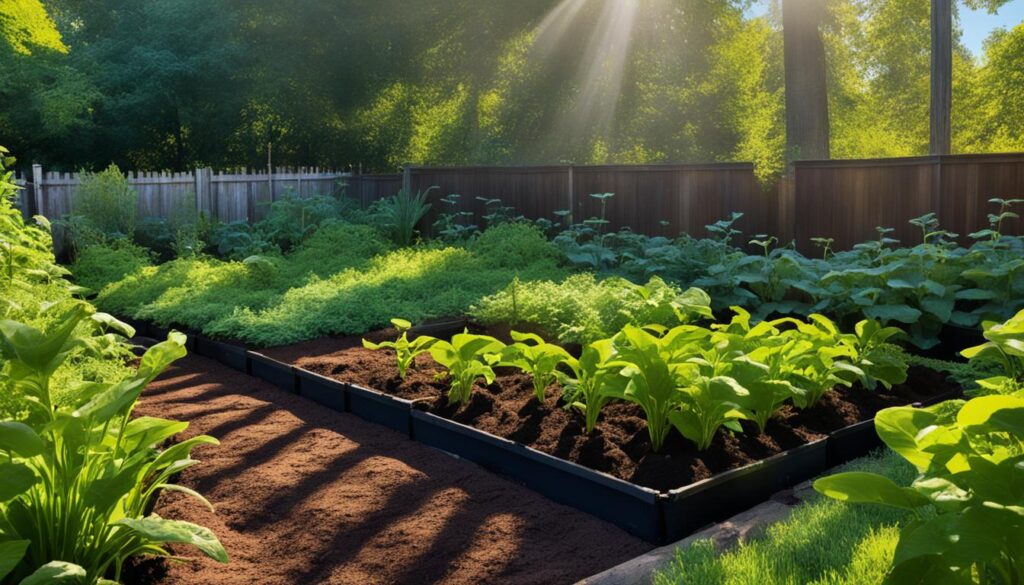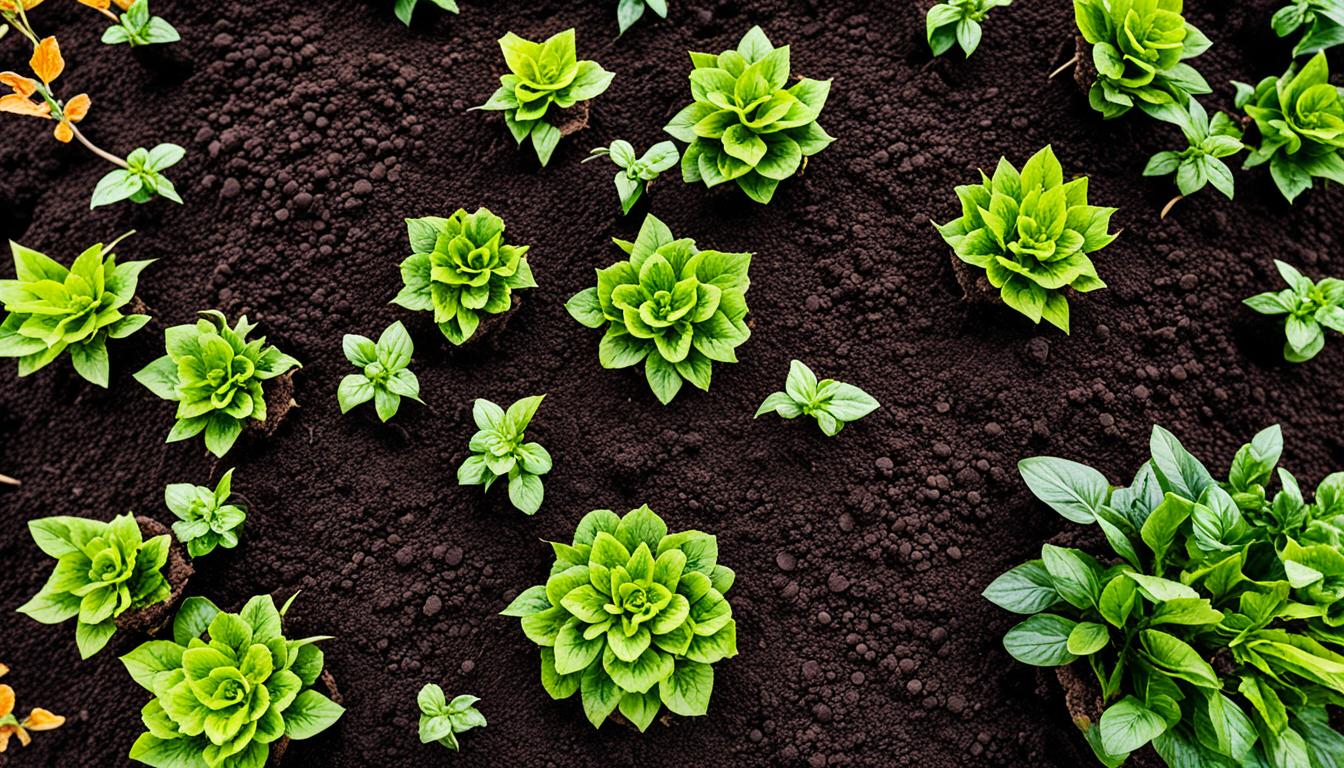This post contains affiliate links.
Imagine stepping into your garden, feeling the soft soil on your fingertips, and watching as vibrant plants reach for the sun. There’s something undeniably magical about nurturing life from the ground up. Whether you’re a seasoned gardener or just starting, the key to unlocking the full potential of your plants lies in one essential factor: the soil.
Like the foundation of a house, the right soil provides the stability and nourishment that plants need to thrive. It’s the secret ingredient that can make all the difference between a lackluster garden and a flourishing oasis. Understanding the different types of soil and their benefits is the first step towards creating an optimal environment for your plants to grow and flourish.
Whether you’re aiming for a bountiful vegetable garden or a stunning flower bed, this article will guide you through the world of soil, helping you uncover the top soil choices for gardens and the ideal garden soil types. Get ready to unlock the secrets of successful gardening, as we dive deep into the very foundation of your green thumb.
Key Takeaways:
- Understanding the different types of soil is crucial for optimal plant growth.
- Healthy garden soil is a living ecosystem that supports beneficial microorganisms.
- Testing your soil, adding organic matter, and providing proper air and water conditions are key steps in optimizing soil health.
- Different vegetables have specific soil preferences, so it’s important to tailor your soil management practices accordingly.
- Improving soil quality and addressing common soil issues can enhance overall soil health and fertility.
Understanding Soil Types and Composition
When it comes to gardening, having a good understanding of soil types and composition is essential. After all, the right soil is the foundation for successful plant growth. Let’s dig deeper into the different types of soil and their unique characteristics.
Soil is composed of mineral particles, organic matter, water, and air. The three primary soil types are silt, sand, and clay. Each type is distinguished by its particle size, which affects various soil properties.
Silt soil falls in between sandy and clay soil in terms of water retention and nutrient-releasing ability. It has a fine texture and holds moisture better than sandy soil while still allowing for adequate drainage.
Sandy soil drains quickly, which can be both a blessing and a curse. On the upside, it prevents waterlogged conditions, but it can also lead to nutrient and water retention issues for plants. However, sandy soil is ideal for certain plants that prefer drier conditions.
Clay soil holds water well but tends to become waterlogged, depriving plant roots of much-needed oxygen. It has a dense nature that can lead to poor drainage. However, clay soil is nutrient-rich and holds nutrients more effectively than other soil types.
Loam soil is considered the best soil for gardening due to its balanced composition. It’s a combination of sand, silt, and clay soil, which offers the best of all worlds. Loam holds moisture while providing good drainage, allowing plant roots to access air and water. Moreover, it is rich in nutrients and organic matter, making it an ideal choice for most garden plants.
Now that you have a solid grasp of soil types and their composition, you can make informed decisions when choosing the soil for your garden. The next section will delve into the specific soil preferences for common vegetables, helping you tailor your gardening practices accordingly.
Soil Preferences for Common Vegetables
Different vegetables have specific preferences when it comes to soil texture, pH, and nutrient content. It’s important to understand the specific soil requirements for the vegetables you plan to grow to ensure optimal plant health and productivity. Here are some examples of soil preferences for common vegetables:
Carrots
Carrots prefer deep, sandy loam or sandy soil with a slightly acidic to neutral pH. The loose texture of sandy soil allows carrots to grow long and straight, while the slightly acidic to neutral pH ensures nutrient availability for healthy growth.
Tomatoes
Tomatoes thrive in well-draining soil rich in organic matter and a slightly acidic to neutral pH. Good drainage prevents waterlogging and root rot, while organic matter provides essential nutrients for robust tomato plants.
Lettuce
Lettuce plants do well in loose, sandy loam soil with good drainage and a slightly acidic to neutral pH. The loose texture and good drainage of sandy loam soil promote healthy root development, while the slightly acidic to neutral pH aids in nutrient absorption.
Peppers, Beans, Cucumbers, Zucchini, and Spinach
Peppers, beans, cucumbers, zucchini, and spinach also have their own soil preferences based on their nutrient needs and respective planting requirements. Here are some general guidelines for these vegetables:
| Vegetable | Soil Preferences |
|---|---|
| Peppers | Well-draining soil with a slightly acidic to neutral pH |
| Beans | Well-draining soil with a slightly acidic to neutral pH |
| Cucumbers | Loose soil with good drainage and a slightly acidic to neutral pH |
| Zucchini | Loose soil with good drainage and a slightly acidic to neutral pH |
| Spinach | Rich, well-draining soil with a slightly acidic to neutral pH |
By providing the right soil conditions for your vegetables, you can ensure they have the best chance to thrive and produce a bountiful harvest.

Improving Soil Quality
Regardless of your soil type, there are steps you can take to improve its quality. Sandy soils benefit from the addition of organic matter to enhance water and nutrient retention. Clay soils can be improved by adding coarse sand or gypsum to improve structure and drainage. Silt soils benefit from organic matter to enhance their structure and drainage.
Composting is an effective method to turn kitchen and yard waste into rich soil amendments. Regularly adding compost to your garden soil improves fertility over time. Soil testing is also recommended to identify any nutrient deficiencies and make specific amendments. By regularly monitoring and managing soil quality, you can create an ideal environment for healthy plant growth.
Benefits of Improving Soil Quality:
1. Enhanced water and nutrient retention
2. Improved soil structure and drainage
3. Increased fertility and nutrient availability
4. Healthy plant growth and productivity
5. Reduced need for chemical fertilizers
To illustrate the significance of improving soil quality, take a look at the following table:
| Soil Type | Improvement Method | Benefits |
|---|---|---|
| Sandy soil | Add organic matter | Enhanced water and nutrient retention |
| Clay soil | Add coarse sand or gypsum | Improved structure and drainage |
| Silt soil | Add organic matter | Enhanced structure and drainage |
Improving your soil quality not only benefits your plants, but also helps create a sustainable and thriving garden. Whether you’re growing flowers, vegetables, or herbs, high-quality gardening soil is essential for their growth and overall health.
Common Soil Issues and Solutions
Gardeners often encounter common soil issues that can hinder plant growth. Understanding these challenges and implementing effective solutions is key to maintaining nutrient-rich soil blends for your gardening needs.
One common problem is soil compaction, which occurs when the soil becomes tightly packed and restricts airflow, water absorption, and nutrient movement. Compacted soil creates a hostile environment for plant roots to grow and thrive.
Another issue is waterlogging, which happens in poorly-drained soils and can lead to root rot. Excessive water retention prevents proper oxygen circulation and suffocates plant roots.
pH imbalance is another concern that affects nutrient absorption. When the soil pH is incorrect, plants struggle to take in the necessary nutrients, resulting in poor growth and development.
Nutrient deficiencies are also common, as different plants have specific nutrient requirements. If the soil lacks essential nutrients, plants will suffer and struggle to reach their full potential.
To address these problems, there are several solutions you can implement:
- Incorporate organic matter: Adding compost, manure, or other organic materials to the soil helps improve its structure, water-holding capacity, and nutrient content.
- Enhance drainage: For poorly-drained soils, consider incorporating coarse sand or organic matter to improve water movement and prevent waterlogging.
- Adjust pH: If your soil has a pH imbalance, you can use lime to raise the pH or sulfur to lower it, depending on the specific needs of your plants.
- Replenish nutrient deficiencies: Identify nutrient deficiencies through soil testing and then supplement the soil with the specific fertilizers or organic amendments needed.
Regular soil testing and monitoring are crucial for maintaining appropriate soil for gardening. By addressing these common soil issues and implementing the necessary solutions, you can create a nutrient-rich soil blend that supports healthy plant growth and maximizes your gardening success.
Importance of Organic Matter in Soil
When it comes to organic soil for plants, the key ingredient for success lies in incorporating nutrient-rich soil blends into your gardening routine. And the secret weapon? Organic matter, also known as humus.
Organic matter is the unsung hero of soil health. It’s like the fairy godmother that grants your plants’ wishes, making everything better. Let’s take a closer look at the magical benefits of organic matter:
- Improved water-holding capacity: Organic matter acts like a sponge, soaking up moisture and retaining it for when your plants need it most.
- Aerated soil: With its crumbly texture and pore spaces, organic matter allows for better air circulation, providing oxygen to plant roots and beneficial microorganisms.
- Regulated soil temperature: Just like a cozy blanket, organic matter keeps the soil warm in colder months and cool in the scorching heat, giving your plants a comfortable environment to thrive in.
- Released nutrients: As organic matter decomposes, it releases valuable nutrients, like a never-ending buffet for your plants. Don’t worry, they won’t overeat!
- Increased nutrient retention: Organic matter acts as a magnet, attracting and holding onto essential nutrients, preventing them from leaching away.
- Bountiful microorganisms: Beneficial microorganisms, such as bacteria and fungi, thrive in the presence of organic matter, creating a bustling community that helps break down nutrients and wards off harmful pathogens.
To reap the rewards of organic matter, incorporate it into your soil in various forms. Consider using compost made from kitchen scraps and yard waste, manure from your favorite barnyard friends, nutrient-rich peat moss, or composted materials from your own backyard.
Remember, organic matter is not a one-and-done deal. To keep your garden soil in top-notch condition, apply organic matter regularly and accompany it with a complete fertilizer. This mighty duo will ensure your garden soil remains a nutrient-rich paradise for your plants.
But wait, there’s more! While vegetable gardens benefit from organic matter, don’t forget about your ornamental plants and turf areas. Incorporating adequate organic matter before planting will set the stage for their long-term health.
Ready to transform your soil into a nutrient-packed haven?
Give organic matter the superhero role it deserves. Your plants will flourish, and your garden will be the envy of all your neighbors.
| Benefit | Description |
|---|---|
| Improved water-holding capacity | Organic matter acts like a sponge, retaining water for your plants’ needs. |
| Aerated soil | Organic matter provides pore spaces for better air circulation and oxygen delivery. |
| Regulated soil temperature | Organic matter helps keep the soil warm in colder months and cool in hot weather. |
| Released nutrients | As organic matter decays, it releases valuable nutrients for plant growth. |
| Increased nutrient retention | Organic matter attracts and holds onto essential nutrients, preventing them from leaching away. |
| Bountiful microorganisms | Beneficial microorganisms thrive in the presence of organic matter, enhancing soil health. |

Using Cover Crops and Manures
In order to improve the quality of your soil, consider incorporating cover crops and manures into your gardening practices. These natural additions can significantly enhance soil health and fertility, providing the ideal conditions for your garden to thrive.
Cover crops, such as winter rye, oats, and buckwheat, are planted to benefit the soil. Once grown, these crops are then plowed under while still green, allowing them to break down and increase the organic matter in the soil. This process not only improves soil structure but also enhances tilth, which refers to the soil’s overall health and workability.
An excellent choice for vegetable garden soils is to plant fall cover crops, including annual rye or ryegrass. These crops serve the dual purpose of smothering weeds and adding organic matter to the soil, enriching it with essential nutrients and improving its overall quality.
To enrich all types of soils and crops, dried animal manures can be used as valuable amendments. They not only provide the necessary nutrients for plant growth but also contribute to the organic matter content in the soil. Manures are available from various animals, such as cows, horses, chickens, rabbits, and more. It’s crucial to ensure the manure is thoroughly decomposed before application to prevent the risk of burning your plants.
Incorporating cover crops and manures into your gardening practices is a sustainable and effective way to improve soil health and fertility. These natural soil enhancers promote the growth of beneficial microorganisms, increase the organic matter content, and provide essential nutrients for healthy plant development. By embracing these practices, you can create an optimal environment for your plants to flourish and reach their full potential.
The Benefits of Fertigation
When it comes to maintaining high-quality gardening soil and ensuring premium growth for your plants, fertigation is a game-changer. This innovative method combines the power of fertilization and irrigation, delivering organic soil for plants directly to their roots through an efficient irrigation system.
Why is fertigation particularly beneficial for your garden? Well, sandy soils often suffer from nutrient leaching, where plant nutrients are washed away by excessive watering. Fertigation effectively addresses this issue by delivering nutrients straight to the plants, reducing waste and optimizing nutrient uptake.
But let’s not forget that fertigation is not a cure-all for all of your soil issues. You still need to monitor the pH balance, organic matter content, and soil structure to maintain overall soil health and foster lush plant growth.
A Wise Investment: Fertigation
“Fertigation is like a plant nutrition delivery service. It ensures your plants receive the precise amount of nutrients they need, right at their roots. It’s the secret weapon to maximize plant growth and productivity.”
– Dr. David Greene, Agricultural Scientist
To showcase the benefits of fertigation, consider the comparison table below:
| Fertigation | Traditional Fertilization | |
|---|---|---|
| Nutrient Efficiency | Delivers nutrients directly to the roots, reducing waste and improving uptake | Requires time-consuming application and can result in nutrient runoff |
| Convenience | Automated process integrated with irrigation systems, saving time and effort | Manual application requires more time and labor |
| Consistency | Ensures consistent nutrient supply throughout the growing season | May result in uneven nutrient distribution |
| Customization | Allows precise control of nutrient delivery based on plant needs | Limited customization options |
As you can see, fertigation offers numerous advantages over traditional fertilization methods. It’s a wise investment for anyone seeking to achieve premium soil for growing plants and maximize their garden’s potential.
To summarize, including fertigation in your gardening routine can be a game-changer, providing high-quality gardening soil and promoting optimal plant growth. While fertigation optimizes nutrient delivery, it’s essential to remember that it’s just one piece of the soil health puzzle. Monitor pH, organic matter, and soil structure to ensure a thriving garden.
Conclusion
Congratulations on taking the first step towards achieving the best soil for gardening! By understanding soil types, improving soil quality, and addressing common soil issues, you can create the perfect foundation for your garden to thrive.
Start by testing your soil to determine its composition and nutrient levels. This will help you make informed decisions on how to amend it. Adding organic matter, such as compost or manure, is key to enriching the soil and providing essential nutrients for your plants. Don’t forget to create proper air and water conditions by ensuring adequate drainage and watering practices that suit your specific plants.
Protecting the topsoil is essential to maintain its fertility. Minimize chemical use to preserve the natural balance of the soil and promote a healthy ecosystem. Crop rotation is another effective technique to prevent soil depletion and control pests. By switching the types of crops you grow in different seasons, you can replenish nutrients and manage disease and insect issues effectively.
Consider using cover crops and incorporating manures to further enhance soil fertility. These practices not only enrich the soil with organic matter but also help control weeds and pests. Additionally, you may explore fertigation, a technique that combines fertilization and irrigation, to provide optimal nutrient uptake for your plants. With the right soil foundation, your garden will be set for success, and you’ll enjoy premium soil for growing plants that will yield bountiful harvests year after year. Happy gardening!
FAQ
What is the best soil for gardening?
What are the different types of soil?
What are the soil preferences for common vegetables?
How can I improve soil quality?
What are common soil issues and their solutions?
Why is organic matter important in soil?
How can cover crops and manures be used to improve soil conditions?
What are the benefits of fertigation?
How can I optimize my garden’s soil health?
Source Links
- https://extension.umn.edu/managing-soil-and-nutrients/living-soil-healthy-garden
- https://ezfloinjection.com/article/best-soil-for-vegetable-gardens/
- https://extension.psu.edu/soil-management-in-home-gardens-and-landscapes
This post contains affiliate links.

